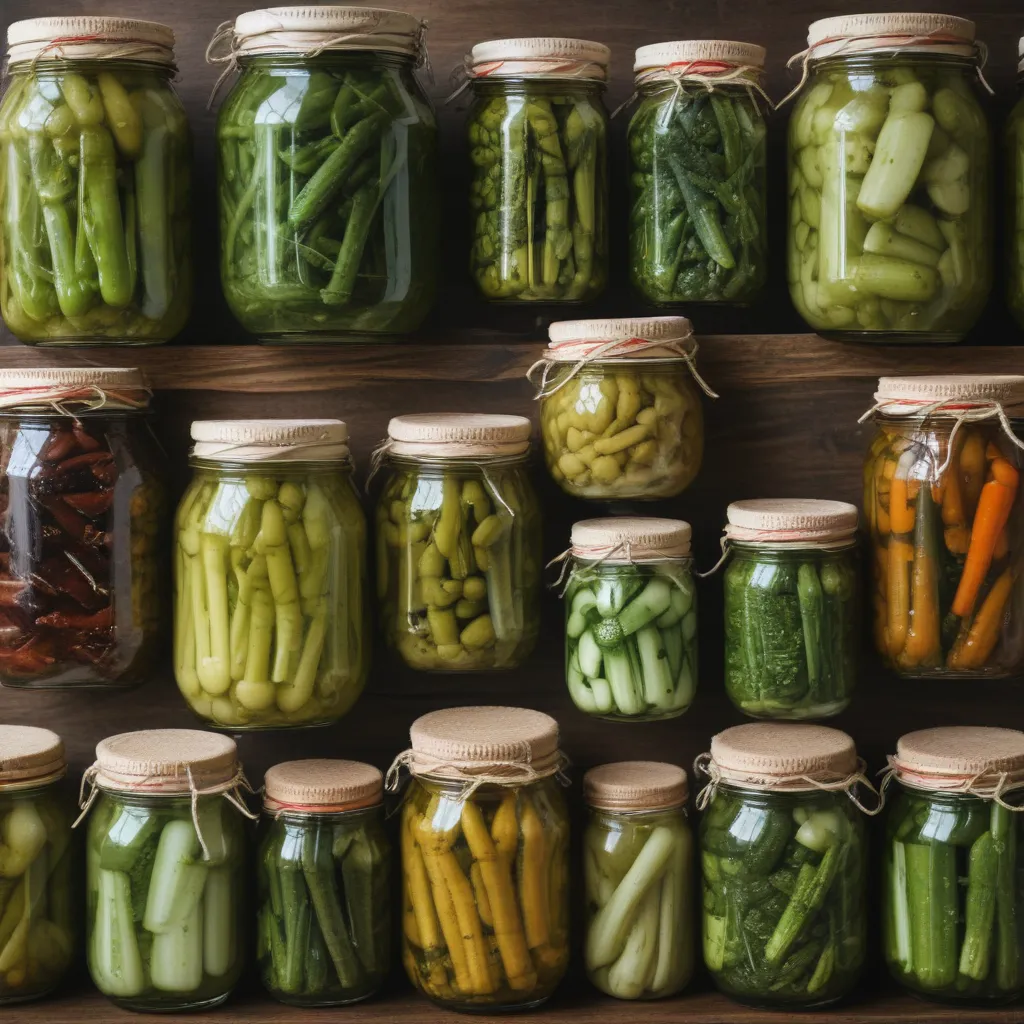
Unlocking the Secrets of Fermentation: A Year-Round Flavor Journey
As the sun streamed through the large windows of Camperdown Elm, I couldn’t help but feel a sense of excitement. Today, I was about to embark on a culinary adventure, exploring the fascinating world of Japanese pickling techniques. Being a regular at this Brooklyn-based gem, I knew that their menu was a harmonious blend of seasonal ingredients and traditional Japanese flavors. But I was curious to uncover the stories behind the tantalizing pickles that so often accompanied their dishes.
The Art of Pickling: A Year-Long Endeavor
Pickling, as I soon learned, is not just a way to preserve food – it’s a meticulously crafted art form that can unlock a symphony of flavors. At Camperdown Elm, the chefs have dedicated themselves to mastering this ancient technique, using it to transform the humble vegetable into a delightful culinary experience.
“Pickling is a year-round pursuit for us,” explained head chef, Takeshi Sato, as we stepped into the restaurant’s immaculate kitchen. “We’re always experimenting with new ingredients and techniques, ensuring that our pickles complement the seasons and bring out the best in our dishes.”
I was intrigued. How could something as simple as a pickled vegetable be so complex? Takeshi sensed my curiosity and gestured for me to follow him on a journey through the restaurant’s fermentation lab.
The Science Behind the Sour: Understanding Lacto-Fermentation
As we donned our aprons and protective gear, Takeshi began to explain the science behind lacto-fermentation – the process that gives pickles their signature tang and crunch.
“It all starts with beneficial bacteria,” he began, his eyes gleaming with enthusiasm. “When we submerge vegetables in a saltwater brine, lactobacillus bacteria naturally present on the produce begin to convert sugars into lactic acid. This not only preserves the vegetables but also creates that delightful sour flavor we all love.”
I listened attentively as Takeshi walked me through the various stages of the pickling process, marveling at the intricate dance between microorganisms and ingredients. He demonstrated how the team carefully monitors pH levels, temperature, and oxygen exposure to ensure the perfect balance of flavors.
“Each type of vegetable has its own unique fermentation timeline,” Takeshi explained, gesturing to the rows of jars lining the shelves. “Some may take a week, while others can take months to develop their full potential. It’s all about patience and understanding the unique characteristics of each ingredient.”
Seasonal Inspirations: Capturing the Essence of Nature’s Bounty
As we delved deeper into the world of Japanese pickling, I was struck by the seamless way Camperdown Elm’s chefs incorporate seasonal produce into their creations. From the bright, crunchy pickled carrots of spring to the earthy, umami-rich mushroom pickles of autumn, each jar held a story of the land and the hands that cultivated it.
“We work closely with local farmers and foragers to source the freshest, most flavorful ingredients,” Takeshi shared, his voice brimming with pride. “It’s important to us that our pickles reflect the rhythm of the seasons and the unique terroir of our region.”
I couldn’t help but nod in agreement as I sampled a vibrant pink pickle made from locally-grown beets. The burst of sweetness and acidity on my tongue was a revelation, and I found myself wondering how I had ever lived without such a flavor-packed accompaniment.
Mastering the Art of Preservation: Techniques for the Home Cook
As our conversation deepened, Takeshi could sense my growing fascination with the art of pickling. He smiled and gestured to a nearby shelf, filled with a diverse array of jars, each one a testament to the skill and creativity of the Camperdown Elm team.
“We believe that the joy of pickling should be accessible to everyone,” he said, carefully selecting a few jars to share. “That’s why we’re always eager to share our techniques and inspire the home cook to experiment with these time-honored methods.”
Takeshi proceeded to walk me through the basic steps of lacto-fermentation, highlighting the importance of using the right equipment, maintaining proper pH levels, and ensuring optimal temperature and oxygen conditions. He also shared some of his favorite flavor combinations, from the classic Japanese cucumber pickles to the more adventurous kimchi-style ferments.
“The beauty of pickling is that it’s endlessly adaptable,” Takeshi explained, his hands gesturing animatedly. “You can take any vegetable, herb, or spice and transform it into a unique and delicious preservation. All it takes is a little creativity and a willingness to experiment.”
Unlocking the Secrets of Umami: Pickles as the Ultimate Flavor Enhancers
As our discussion drew to a close, Takeshi shared one final insight that truly solidified my appreciation for the art of Japanese pickling.
“Pickles aren’t just a side dish or a condiment,” he said, his eyes alight with passion. “They’re a powerful tool for unlocking the inherent umami flavors in our food. The sour, salty, and sometimes sweet notes of a well-crafted pickle can elevate an entire dish, adding depth, complexity, and balance to every bite.”
I nodded in understanding, recalling the way the pickled accompaniments at Camperdown Elm had elevated every meal I had enjoyed there. The tangy, crunchy elements had seamlessly complemented the rich, savory flavors of the main dishes, creating a harmonious and unforgettable dining experience.
“That’s why we take such care and dedication in perfecting our pickling techniques,” Takeshi concluded, a proud smile spreading across his face. “We want our guests to embark on a flavor journey – one that celebrates the seasons, honors tradition, and leaves them craving more.”
As I bid farewell to Camperdown Elm and the passionate team behind its culinary magic, I couldn’t help but feel inspired. The art of Japanese pickling was no longer just a fleeting curiosity, but a profound appreciation for the transformative power of fermentation. I knew that my next trip to the grocery store would be filled with a renewed sense of wonder, as I set out to explore the endless possibilities of pickled produce.
